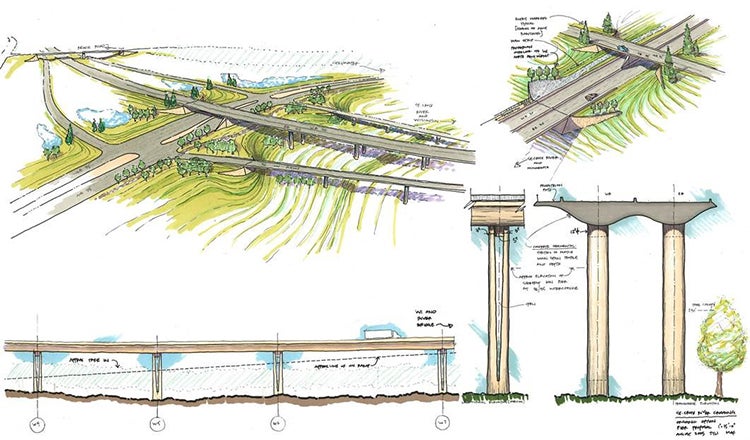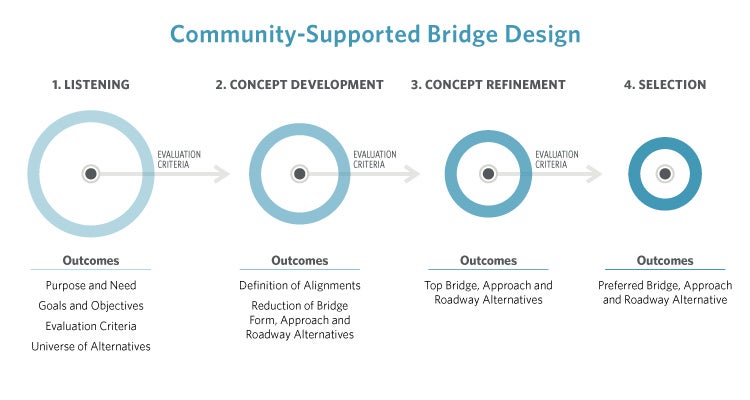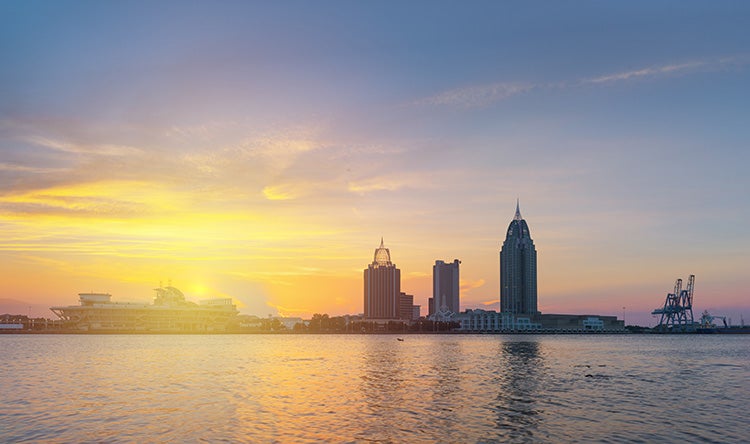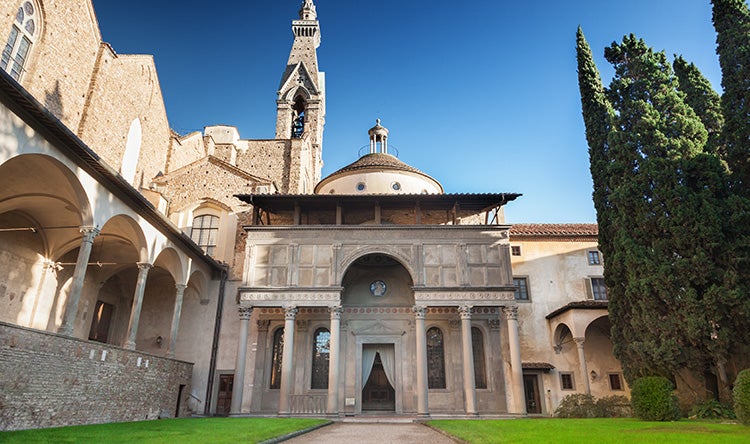
Experts Talk: Form Finding for Signature Bridges with Michael Fitzpatrick
Experts Talk is an interview series with technical leaders from across our transportation program.
Designing Signature Structures that Communicate Community Identity
A signature bridge — new or replacement — can be an opportunity for a community to express its identity and create a public space that captures the emotions of residents and visitors. Signature bridge projects can be opportunities to reconnect neighborhoods and create a unique sense of place. For an owner, however, finding the consensus that achieves these sorts of ends within their schedule and budget can seem intimidating. It doesn’t have to be.

Michael Fitzpatrick, our bridge aesthetics design leader, has a unique approach that weaves aesthetics with community-articulated sensibilities to design signature structures that evoke the character of an area. He finds consensus that shapes solutions embraced by owners and stakeholders. In this interview he discusses how he develops the insight into the many points of view in each community to design structures whose form enhances the local environment.
Q. What is form finding and how is it different from context-sensitive design?
A. Form finding is not new to architects but may be new to engineers and owners. It is similar to context-sensitive design but is a more holistic design development approach. Context-sensitive design was developed to give engineers guidance on how to scope/scale and design to a specific situation such as a country road versus an urban environment. Unfortunately, that process doesn’t work with green or brown sites, mixed or future conditions, or when a community or owner have differing ideas on what should be built. Context-sensitive design is a proven process to satisfy communities and owners for discovering requirements for what is known as a workhorse bridge, or a bridge that fits the site but is not necessarily a signature bridge. Our form finding process is different and allows our teams to work with communities to push beyond context-sensitive design. Our approach connects with a community to shape a solution that resonates emotionally as well as functionally.

Q. How do you manage the creative process to conceive the signature bridge form best suited for a community while balancing wants, needs and budget realities?
A. When our team starts a project, I let everyone know that we will be bringing “crazy” ideas to the table. We let them know that the purpose of the ideas is to find the design edge, which I call “breaking it.” When we know what an owner and community does NOT want, we can dial it back. So in the first phase we bring the whole universe of bridge design to the table, where we look at everything we can conceive.
When I tell people that we are bringing some crazy ideas, their imagination runs wild. After we show them our ideas, the response is typically, “Oh, that isn’t that crazy.” We do not try to sell a design; we just offer ideas. We then can eliminate or modify the concepts into groups or singular designs for additional consideration.
This approach keeps the project on track because this thorough exploration of ideas means we do not need to backtrack and insert a concept later in the process. My architectural and sculptural education taught me to be rigorous about process and keep the action moving forward. Because of the large number of ideas we start with, no one wonders if there is a design we did not consider.

Q. What’s the most interesting long-span bridge you’ve worked on and why?
A. Mobile River Bridge and Bayway Project is one of the most challenging projects I have worked on and it is the largest project the agency has ever done.
Alabama Department of Transportation wanted an Aesthetics Guideline document that represented the values of the various communities and envisioned an inspirational guideline as opposed to a typical guideline document. We recognized their perspective as a means to create a guideline document differently. Instead of telling the industry, “This is what we want,” we described the experience we wanted people to have from various viewpoints.
We also created a new word — skyscape — to focus on the visual inspiration that is so important in Mobile. A particular attribute of the South is the silhouetting of objects in the evening. Live oaks, houses and church steeples characterize the environment just like the hardscape and landscape. Through this visual guidance ALDOT will be able to achieve a result where people will recognize the Mobile River Bridge just like people recognize the Golden Gate Bridge, because it will have grown from the values of that particular place.
Q. How do you get to know a community where you’re working on a design?
A. First I do a lot of research on the history of a place, the people who lived/live there, and what makes it special. It is very common for me to spend time all around the site, not just where the bridge will be located. I walk a lot. I talk to people who work in the local shops about what they love about the place. By looking at a place and community with fresh eyes and listening with an open mind, I discover what its soul is made of.
I look for what makes a place different. In Mobile while looking for imagery I discovered the Crichton leprechaun, which is based on an urban legend about a group of people in Mobile who witnessed a leprechaun in the early 2000s. The story stuck and there was even a sketch — so we included the sketch in one of our public presentations and the community loved it! An audience member told me that when he was in the National Guard stationed in Iraq and met his new platoon, upon saying where he was from, another Guardsman said, “I know Mobile, they have that leprechaun!”

The benefit of this approach is that appreciating what is very important to the people who live in a community leads to an intimate understanding of a place and an authentic response. That is what makes a bridge iconic – it reveals the soul of the place and the spirit of the community. And the resulting design will resonate with the community for years to come and leave an imprint in the minds of visitors.
Q. What advice would you give an owner about embedding aesthetics into their bridge program overall?
A. It’s a myth that a project costs more when you include aesthetics. When done properly and from the beginning of the planning phase, an aesthetically pleasing bridge can cost less. The best aesthetics are achieved as an integral and holistic element of the project, not as an additive nonfunctioning element, so the most effective time to consider aesthetics is when the project is conceived.
Typically, my projects are bid at or under engineer’s estimate because we shape the structure that was going to be there anyway! When we think about good design, people notice. All it takes is giving your project more attention.
For more common bridge structures, I helped write the TRB Aesthetics Subcommittee publication, Bridge Aesthetics Sourcebook: Practical Ideas for Short- and Medium-Span Bridges. We called conventional bridges with aesthetic treatments a “workhorse bridge.” Since the vast majority of our bridges in the U.S. fit into this category and most states do not have an aesthetics guideline standard, this Sourcebook helps an owner or engineer with a project where the community wants something a little beyond a baseline bridge.
Inspiration & Advice
Q. What inspired you to enter the architectural field?
A. When I was young I drew and painted all the time, winning first prize in an art competition. In high school I decided to become a car designer, but no one knew what that profession was called so I focused on being an engineer. In the first two years of engineering school I loved calculus, physics and theory classes but there was no design time. Then I discovered industrial design (automobile designers) and switched to an art school. Two years later I discovered sculpture and switched majors again! My first job was in an original Art Deco and Art Nouveau furniture gallery where we restored pieces and sold them. A co-worker said I should go to school for architecture because what I was interested in was designing an entire environment.
What launched my career was working for an architecture firm with a 100-year history of collaborating with engineers on the design of bridges. In traditional architecture, program defines space such as a living room and dining room. The expression comes from the relationship between program and activities. Bridge architecture, instead, has no traditional program but is still responsible for creating a quality experience. Also, bridges respond to both an urban and human scale; unlike buildings, they need to work on a macro and micro scale.
Q. Who are the people or things that have influenced you the most?
A. My inspirations include Pier Luigi Nervi, Marcel Duchamp, Robert Maillart, Eastern culture and design, Paul Cezanne, Greene and Greene, Filippo Brunelleschi, Constantin Brancusi, e e cummings, Louis Majorelle, Stephen Berg and photography.
I’ve been fortunate to have many great teachers and professional mentors. Al Holm, a classical architect, had probably the biggest impact on me. He sat me down in his office for two hours one day — classical music was playing, north light through a skylight, plaster Corinthian column cap on the bookshelf — and asked me about my motivation. At one point he asked, “What about beauty? Is there anything wrong with putting a flower in your hair?” I had no idea what he was talking about until I visited Florence, Italy, and stepped through the main door of the Pazzi Chapel. It was like that scene in “The Matrix” when a new experience was added to a character. It opened my eyes to the truth that beauty is achieved through careful planning, design intent and contradiction.

Q. What advice do you have for bridge architects who are new to the profession?
A. I think bridge architecture is a discovered path. To thrive I think one needs to approach design in a new way every day, sharpen your curiosity, question everything and I do mean everything, and always appreciate and be amazed by beauty.
Each Experts Talk interview illuminates a different aspect of transportation infrastructure planning, design and delivery. Check back regularly for new insights from the specialized experts and thought leaders behind our award-winning, full service consulting practice.


